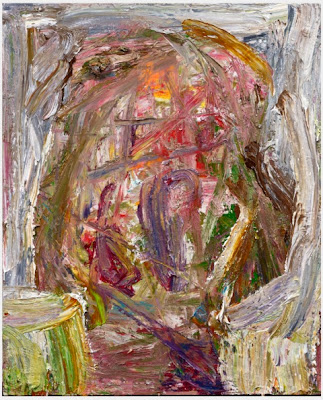September 8 – September 29, 2013
The Rosenfeld Gallery
113 Arch St.
Philadelphia, PA 19106
 |
| Unspoken 24 x 24 oil |
Lisa Pressman creates paintings that draw from the place of “not knowing” and exploration. Her work reveals images that many people have lost sight of, images that communicate to a place deeper than words. The paintings invite a deep, visceral response that evolves over time; they have a life of their own.
Lisa has a BA in Art from Douglass College, Rutgers University and an MFA from Bard College. Her work is exhibited extensively throughout the U.S. and abroad, and is included in many public and private collections. “Inside Matters” is a solo show at Rosenfeld Gallery opening on September 8 th in Philadelphia in Pa . The show continues through September 29th.
This year her work has been exhibited in Nocturnes, curated by Virginia Fabbri Butera, Ph.D. Therese A. Maloney Art Gallery, College of Saint Elizabeth, Morristown, NJ; Shape Shifting, Susan Eley Fine Art, NYC, New York and Microcosms at Butters Gallery, Portland, Oregon. The work has been included in Swept Away: Translucence, Transparence, Transcendence In Contemporary Encaustic, The Cape Cod Museum of Art, Dennis, MA (curated by Michael Giaquinto); a Group Show at Western Carolina State University Museum, Cullowhee, NC. and also Red at the A Gallery in Provincetown, MA.
Pressman’s 2012 group exhibitions included: Wax is Hot, Amy Simon Gallery, Westport, CT; EW’12 Invitational Exhibition, R&F Handmade Paints, Kingston, NY; From Where I Stand, Rye Art Center, Rye, NY; and Confluence: Medium Meets Message, Morean Arts Center, St. Petersburg, FL.
Lisa lives and works in West Orange, NJ and currently is teaching locally and nationally.
About the work:
My work explores the place of “not knowing.” The process is an intuitive dialogue between the random and the deliberate that allows a relationship to develop between intent and accident. Each piece evolves as a play between translucent and opaque layers of paint, as I draw, layer, cover up, sand and scrape. The paintings take on a life of their own, revealing imagery that evokes a visceral response.
This particular series unfolded in response to an image that emerged in the process of painting “The Deep.” The recognizable contours of a vessel led me to explore this form. The contents of the vessels remain hidden, imbuing them with a mysterious, suggestive potency, like the painting process itself.
 |
| Traces |
 |
| Fossil 24 x 24 oil |
 |
| The Bounty |
 |
| Quiet Space 24 x24 oil |
 |
| Night View 18 x18 oil |
 |
| Mystery of Intellect 12 x 12 oil |
 |
| Night VIsion 10 x 10 oil |





























